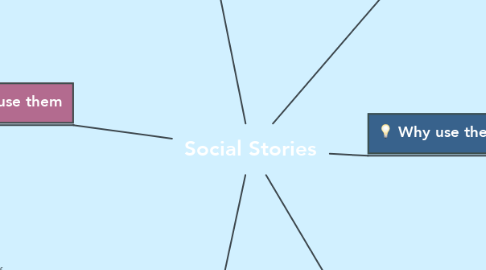Social Stories
by Hilary Peterson

1. When to use them
1.1. Preparing student for transition/change in routine
1.2. Managing difficult or dangerous behaviour
1.3. To explain social 'rules' or conventions
1.4. Managing friendships
1.5. Self-help skills
2. What are they?
2.1. Short story written from perspective of student
2.2. Written about a specific situation the student finds difficult
2.3. Has a specific style and format
2.4. “provides a child with concise and accurate information about what is happening in a specific social situation, outlining both why it is happening and what a typical response might be” (Smith, 2003)
3. Do
3.1. Write the story together with the student
3.2. Have a clear focus to the social story
3.3. Pitch it at their level
3.3.1. e.g. Simple language with helpful images - to match student's cognitive level
3.3.2. e.g. more complex language if certain student fully understands
3.4. Read it aloud to student (if appropriate)
3.5. Go through the story with the student many times on different occasions
3.6. Use it as a positive tool to help student understand
4. Why use them?
4.1. Created for students with autism (Gray 1994)
4.2. Students with ASD have difficulty putting themselves in other people's shoes (Theory of Mind) - understanding others' thoughts, feelings and behaviours
4.3. Students need support to understand things like: why other people behave the way they do, changes in routine, appropriate responses in situations
5. Structure
5.1. Title: states overall goal of story
5.2. Descriptive sentences: what happens "Sometimes I..."
5.3. Perspective sentences: thoughts, feelings, beliefs of others "Other people might think..."
5.4. Directive sentences - "I will try to/I will..."
5.5. Affirmative sentence - "This will mean that..."
6. Don't
6.1. make the story too complex - make sure it has one clear focus
6.2. use it as a way of 'telling off' the student



